Cerex Shepherd FTIR Series
Real-time laboratory quality measurements within a portable package
A true multi-gas analyzer, the Shepherd FTIR standard gas detection libraries are built for common applications, including: air toxics monitoring, hospital and anesthetic gas monitoring , and refinery monitoring. The Shepherd FTIR is also capable of simultaneous monitoring of more than 350 compounds in Cerex’s FTIR library.
Offering true part-per-billion (ppb) detection limits in a simple to operate portable package, the cryo-cooled system can reliably deliver unattended, continuous real time monitoring of ultra low ppb concentrations of individual gas species with absorption features spanning the IR spectrum from 2 to 14 microns.
There are no tedious ongoing calibrations, or additional costs for sample handling, wet chemistry, carrier gas, or sorbent filters. Additionally, are none of the constant maintenance costs or extra work associated with the handling of, or regulatory compliance issues arising from the use of, liquid nitrogen coolant, and with a three year routine maintenance cycle there is a low cost of ownership and time spent. Results are immediate, and the raw data containing all the information necessary for gas identification and quantification is always saved.

Cerex Shepherd FTIR Series
Real-time laboratory quality measurements within a portable package
A true multi-gas analyzer, the Shepherd FTIR standard gas detection libraries are built for common applications, including: air toxics monitoring, hospital and anesthetic gas monitoring , and refinery monitoring. The Shepherd FTIR is also capable of simultaneous monitoring of more than 350 compounds in Cerex’s FTIR library.
Offering true part-per-billion (ppb) detection limits in a simple to operate portable package, the cryo-cooled system can reliably deliver unattended, continuous real time monitoring of ultra low ppb concentrations of individual gas species with absorption features spanning the IR spectrum from 2 to 14 microns.
There are no tedious ongoing calibrations, or additional costs for sample handling, wet chemistry, carrier gas, or sorbent filters. Additionally, are none of the constant maintenance costs or extra work associated with the handling of, or regulatory compliance issues arising from the use of, liquid nitrogen coolant, and with a three year routine maintenance cycle there is a low cost of ownership and time spent. Results are immediate, and the raw data containing all the information necessary for gas identification and quantification is always saved.
Cerex Shepherd FTIR

Shepherd FTIR
Most sensitive model
Weight: 80 lbs (36.3kg)
Measurements: 24.5″ x 18.5″ x 12″ (62cm x 47cm x 30.48cm)
Operating Temperature: Short term 0 – 40⁰C, long term 5 – 35⁰C, non-condensing
Minimum Detection Limits: Parts per billion (ppb)
Optical Path Length: 20 meters
Maintenance
- Recommend quarterly inspection and possible replacement of the air intake filters if operated continuously
- Fans are rated to 70,000 hours at 40°C
- IR source life time is approximately 2 years
- Stirling cooler (detector cryocooler) guaranteed for 2 years before refurbishment is required
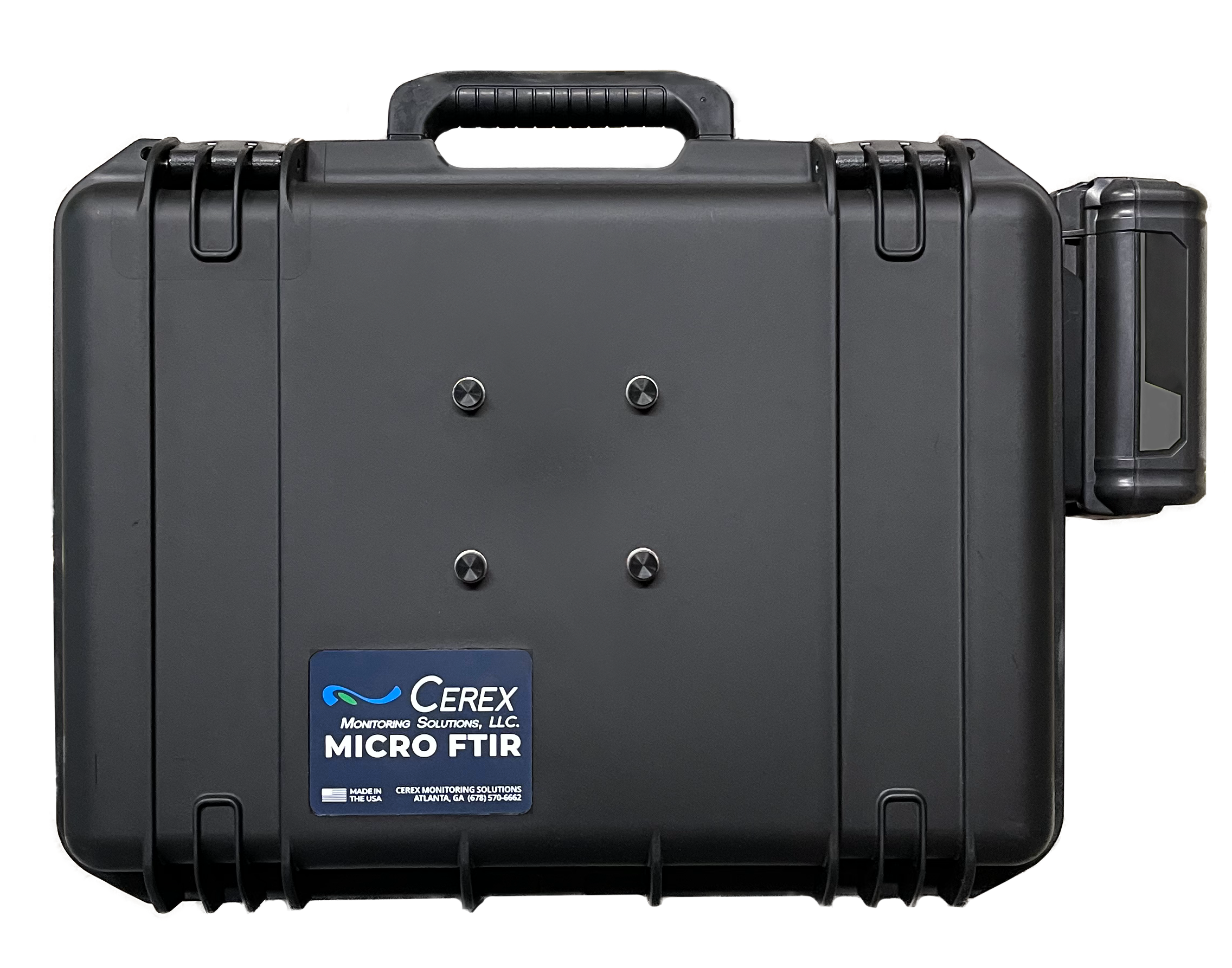
Micro FTIR
Most portable model
Weight 38 lbs (17.2kg) or 35 lbs without battery
Measurements 18″ x 14″ x 6.7″ (45.7cm x 35.6cm x 17cm)
Enclosure 4X – IP54
Operating Temperature Short term 0 to 40⁰C, long term 5⁰C to 30⁰C, non-condensing
Minimum Detection Limits Parts per million (ppm)
Optical Path Length: 4 meters
Maintenance
- Recommend quarterly inspection and possible replacement of the air intake filters if operated continuously
- Fans are rated to 70,000 hours at 40°C
- IR source life time is approximately 2 years
Micro FTIR
Most portable model
Most portable model
How it Works
Portable Point FTIR Technology
The Cerex Shepherd FTIR series operates using a process known as point monitoring. Surrounding ambient gases are channeled into the analyzer via a sample hose or attachment. Following this, an internal cell holds the gas sample for analysis.
Next, with FTIR technology, an infrared light passes through the gas sample contained within the cell. Thanks to an ultra sensitive spectrometer, a physics principle known as the Beer-Lambert Law, and Cerex’s proprietary software (CMS), the gas sample is translated into useable data.
The result of coupling our proven detection system with a 20 meter internal optical sample path and CMS real time analytic software is an industry leading FTIR multi-gas analyzer.
The most sensitive, portable, solution for ambient air monitoring
Offering real time identification and quantification of criteria pollutants, the Shepherd FTIR analyzers provide a sensitive yet cost-effective solution in easy to operate, all-in-one packages.
Low maintenance and low detection limits
Parts-per-billion (ppb) to parts-per-million (ppm) minimum detection limits, an MCT detector cooled to 77K, high spectral resolution, and a long optical path length maximize the sensitivity of the Shepherd FTIR; in other words, it provides laboratory quality results without the laboratory.
Individual species of prolific hazardous air pollutants
The Shepherd FTIR is offered fully configured to meet the requirements of your air quality monitoring application. Target gases are selected from Cerex’s library of 385 compounds.
Common Detectable Gases
Extensive Library with Options for Customization
Cerex has over 385 compounds available for detection with the Shepherd FTIR. If your compound is not one of the compounds already available within our database, the Shepherd FTIR may import gas spectra from the numerous FTIR databases on the web (NIST, EPA, PNNL, etc.)
If you have a compound that is not available in a public database, we may be able to work with you to develop a custom spectrum. Detection limits are a function of the IR detector, installed path length, and site conditions. The detection limits shown have been empirically determined from bump tests of fielded instruments at full path-length.
It is efficient as an alarm and easily integrated into your existing alarm system.
Shepherd FTIR and Micro FTIR Common Target Gases
| Acetaldehyde (C2H4O) |
| Acetic Acid (C2H4O2) |
| Acetone (CH3COCH3) |
| Acetylene (C2H2) |
| Acrolein (C3H4O) |
| Benzaldehyde (C7H6O) |
| Butane (C4H10) |
| n-Butyl (C6H12O2) |
| Carbon Dioxide (CO2) |
| Carbon Monoxide (CO) |
| Chlorine Dioxide (ClO2) |
| Ethane (C2H6) |
| Ethanol (C2H6O) |
| Formaldehyde (CH2O) |
| Formic Acid (CH2O2) |
| n-Hexane (C6H14) |
| Hydrogen Bromide (HBr) |
| Hydrogen Chloride (HCl) |
| Hydrogen Fluoride (HF) |
| Methane (CH4) |
| Nitric Oxide (NO) |
| Nitrogen Dioxide (N2O) |
| Phenol (C6H5OH) |
| Phosgene (CCl2O) |
| Water Vapor (H2O) |
Note: FTIR is not recommended for Benzene and Hydrogen Sulfide monitoring due to poor detection limits; instead, we recommend our UV Sentry (Open Path Detection) or Hound Series (Portable Point Detection) analyzers.
| Type | Compound | MDL PPB | ||||
| Criteria | Sulfur Dioxide | 300 | ||||
| Volatile Organic Compounds | Acrolein | 15 | ||||
| 1,3 Butadiene | 4 | |||||
| Styrene | 8 | |||||
| BTEX | Benzene | 30 | ||||
| Toluene | 100 | |||||
| Ethylbenzene | 25 | |||||
| m-Xylene | 100 | |||||
| o-Xylene | 300 | |||||
| p-Xylene | 300 | |||||
| Alkanes | Pentane C5 | 4 | ||||
| n-Hexane C6 | 3 | |||||
| TVOC | Methane C1 | 3 | ||||
| NMHC | Ethane C2 | 8 | ||||
| NMNEHC | Butane C4 | 4 | ||||
| Propane C3 | 4 | |||||
| Formaldehyde | 7 | |||||
| Propene (propylene) | 6 | |||||
| Ethene (ethylene) | 4 | |||||
| Acetylene | 4 | |||||
| Acetaldehyde | 5 | |||||
| Methanoic Acid | 5 | |||||
| Methanol | 4 | |||||
| Other | Hydrogen Cyanide | 10 | ||||
| Hydrogen Fluoride | 4 | |||||
| Ammonia | 3 | |||||
| Hydrogen Sulfide | 450 | |||||

Software
Results You Can Rely On
Cerex recognizes that detailed gas monitoring results need to be reliable and available quickly to various stakeholders. For this reason, Cerex engineers developed software to accurately detect and display gases within the air in real time from any location.
On a Shepherd FTIR, a user can see results on the integrated touchscreen located on the front of the analyzer. Additionally, remotely on a phone, tablet, or computer anywhere in the world via a virtual connection. GPS and cellular configurations make this possible in remote environments.
All data is automatically saved in an easy to access .csv file; this feature helps our clients in various ways - from daily use to crucial events such as evidence in court. Early detection translates into quicker response times, reduced environmental impact, decreased plant downtime, and reduced exposure to site personnel and the community.
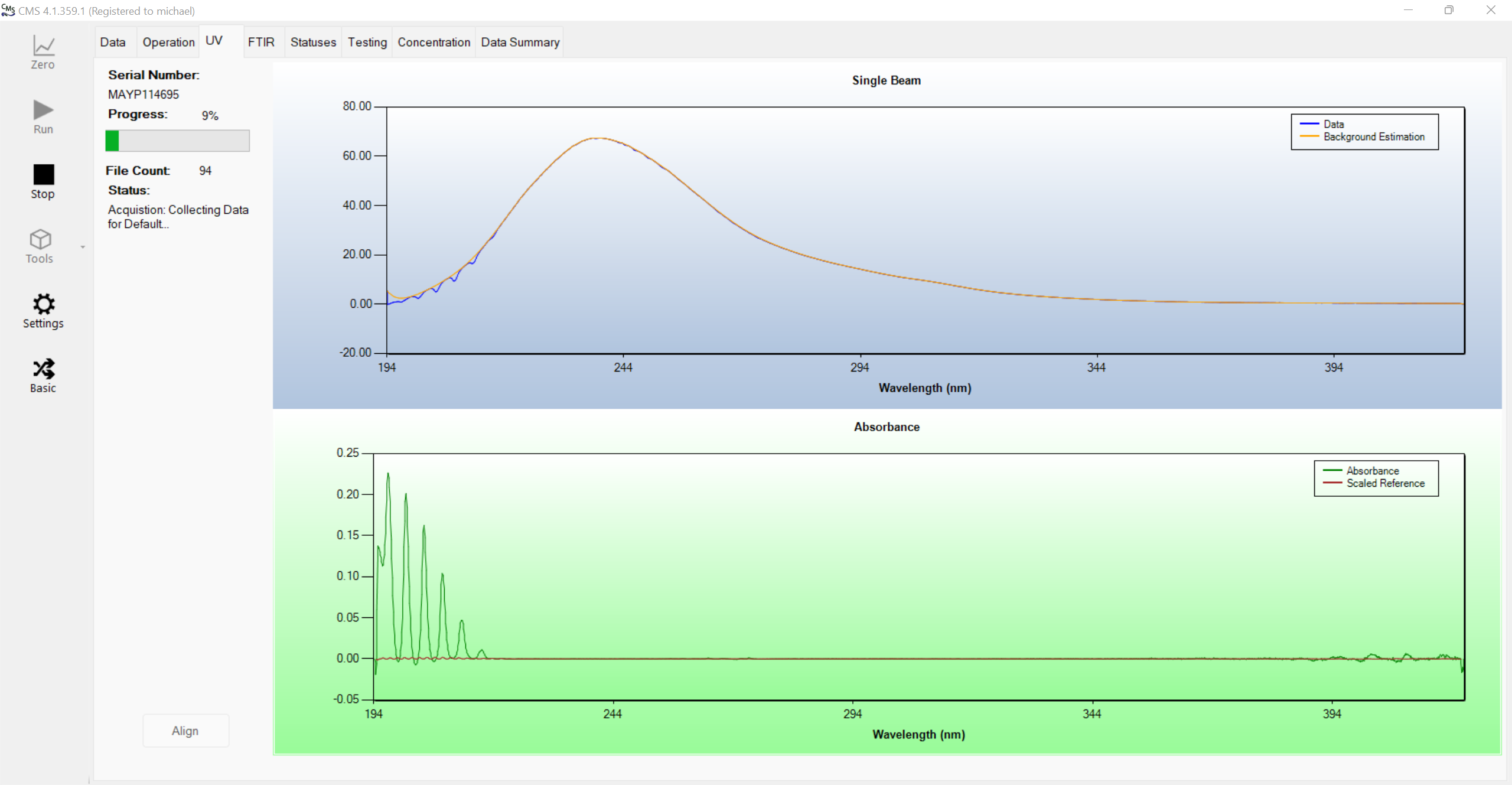
Real time spectral subtraction and synthetic background implementation allow the Air Sentry to clearly display accurate concentrations of target gases over 1000 meters without interference from other gas species
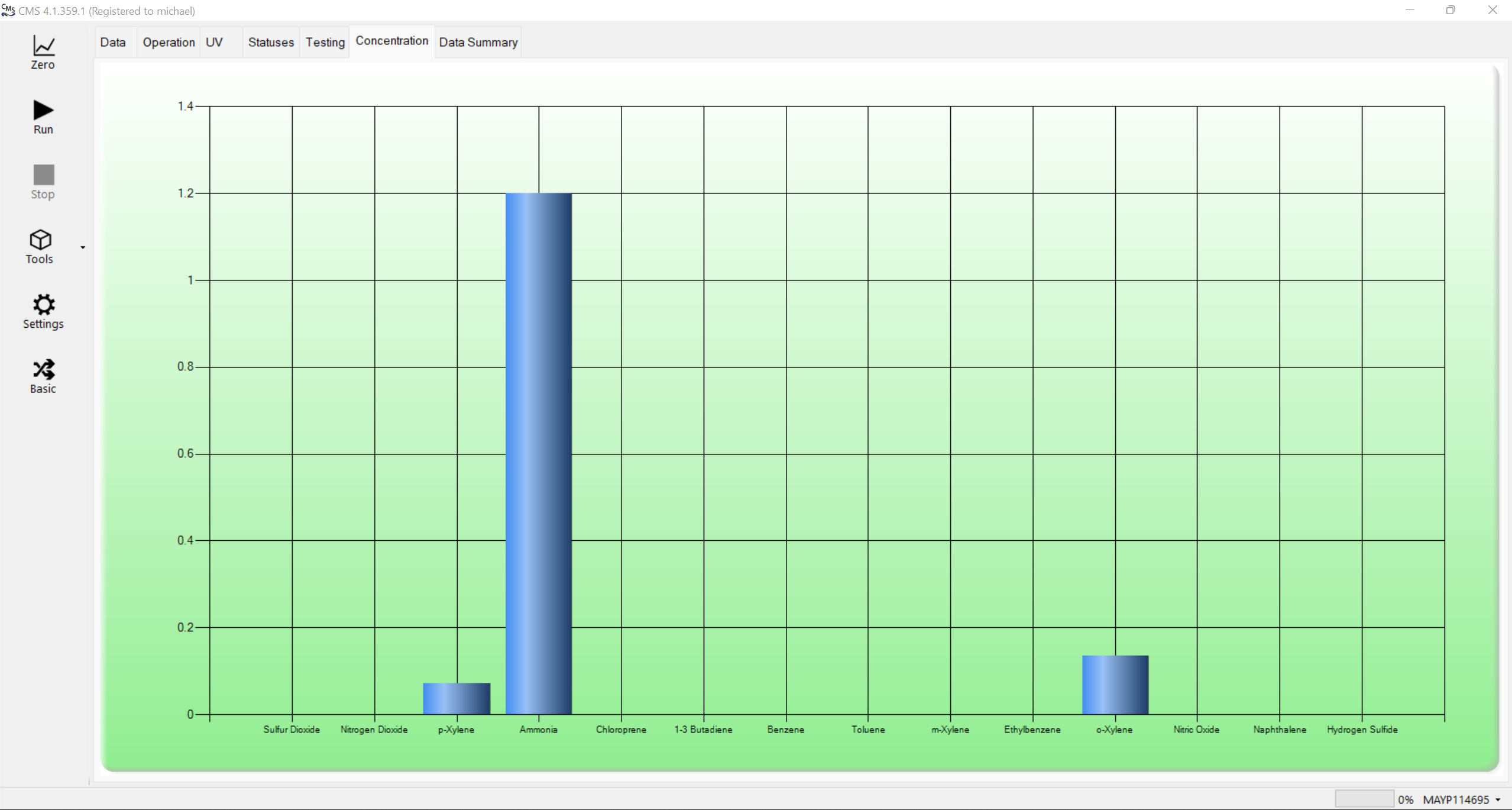

Applications
The Shepherd FTIR series is a viable solution when individual species of infrared (IR) absorbing gases in a non-hazardous atmosphere need to be measured, and high sensitivity point analysis in a portable or transportable package is required.
Security monitoring for TICs and CWAs within public spaces (CBRNE applications), odor complaint response, HAZMAT response, and survey monitoring of PPB (parts-per-billion) levels of HAPs are common applications of the Shepherd FTIR. This includes short term monitoring on battery power as well as long term community deployment within air-conditioned shelters connected to AC power.
As of April 6th, 2023, the Shepherd FTIR is capable of detecting gases stipulated by US EPA HON Rules, such as Benzene, Butadiene, Ethylene Dichloride, Vinyl Chloride, and Chloroprene.
For PPM (parts-per-million) levels, the Micro FTIR will be the best choice with its lightweight case and portability. Both may be used for portable stack analysis if installed downstream of a sample conditioning system providing a cool, dry sample. A dilution system may also be required if measuring high PPM levels of combustion gases.

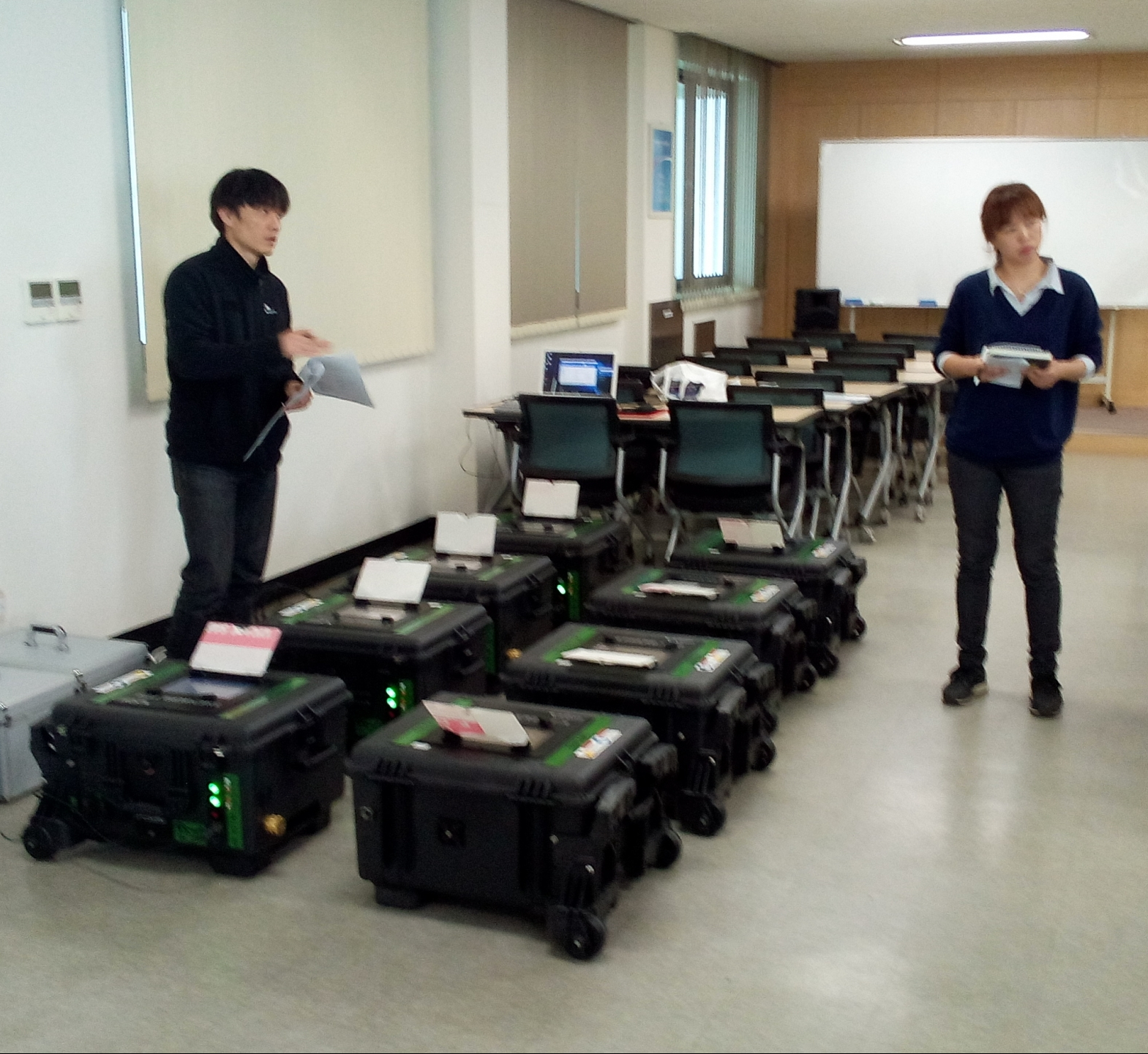

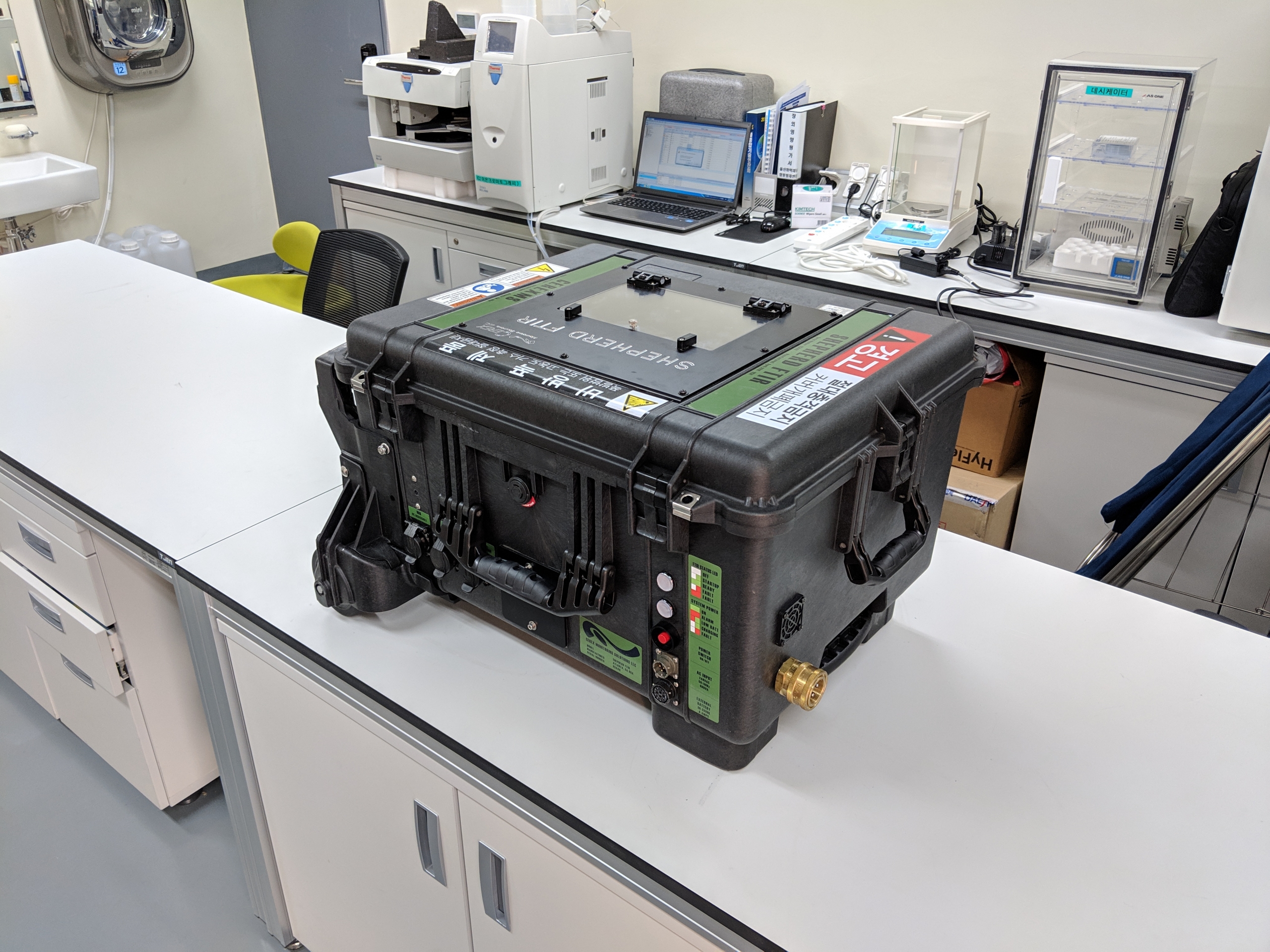
All Applications
Ambient Air Monitoring
Anesthetic / Hospital Monitoring
Chemical Manufacturing AQ
Chemical Warfare Agent Detection
Container Inspection
General Industrial Air Monitoring
HAZMAT
"The HON" Rules by USA EPA for Benzene, 1,3-Butadiene, Ethylene Dichloride, Vinyl Chloride, Chloroprene
Indoor Air Monitoring
Leak Detection
Manufacturing Air Quality
Odor Complaint Response
Refinery Air Quality Fertilizer
Response Border Patrol Inspection
Stationary Source Monitoring (Cool, dry sample)
Shepherd FTIR Specifications
Micro FTIR Specifications
Downloads
Shepherd FTIR Standard Model Brochure (PDF 4.6MB)
Shepherd FTIR Technical Sheet - Specifications (PDF 0.2MB)
Micro FTIR Standard Model Brochure (PDF 5MB)
Micro FTIR Technical Sheet - Specifications (PDF 0.2MB)
